Pat Bertram's Blog, page 218
October 24, 2013
Leading an Elegant Life
Elegance. Such an elegant word, evoking images of times gone by, when clothes gracefully draped the human form, and people wrote with stylish hands.
Several times lately, I’ve stumbled across the word elegant in reference to both language and living, and I’ve become enamored with the idea of leading an elegant life. When people speak of elegance, they generally refer to things — the materiality of life — such as elegant dress or elegant furnishings, but what does that have to do with life itself?
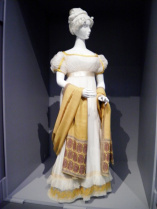 According to my dictionary, elegance means pleasingly graceful; excellent, splendid. According to Wikipedia, elegance is a synonym for beautiful that has come to acquire the additional connotations of unusual effectiveness, simplicity and focusing on essential features.
According to my dictionary, elegance means pleasingly graceful; excellent, splendid. According to Wikipedia, elegance is a synonym for beautiful that has come to acquire the additional connotations of unusual effectiveness, simplicity and focusing on essential features.
So an elegant life would be a life of grace, excellence, effectiveness, and simplicity. Finding the essence of life and paring away that which is cumbersome, unattractive, or unnecessary. Overcoming the limits we have set for ourselves (or that others have set for us). Dreaming of becoming more of who we are.
Sounds lovely, doesn’t it?
During these past years as I’ve struggled to find a way through grief after the death of my life mate/soul mate, I’ve often talked about wanting more, though I have never quite known what I meant by “more.” Well, I still don’t know the specifics of what I mean, but at least I have a better way to describe what I want — an elegant life.
I have a hunch aspiring to lead an elegant life is not an easy task, but beauty and elegance never come without a price.
And it just so happens I have the rest of my life to spend on the pursuit of elegance.
***
Pat Bertram is the author of the suspense novels Light Bringer, More Deaths Than One, A Spark of Heavenly Fire, and Daughter Am I. Bertram is also the author of Grief: The Great Yearning, “an exquisite book, wrenching to read, and at the same time full of profound truths.” Connect with Pat on Google+. Like Pat on Facebook.
Tagged: an elegant life, dreaming of becoming more, meaning of elegant life, pursuit of elegance, wanting more out of life


October 23, 2013
Life After the Death of a Soul Mate
What I love most about blogging is that sometimes when I start writing a post, new or buried thoughts percolate to the surface, ending up on the page and surprising me with insights. Yesterday, when I wrote Living Offline, I had no idea I was starting to look forward to the rest of my life. I’ve kept my head down, plodding along, trying new things, meeting new people, visiting new places, and apparently, somewhere along the line, I went through a renewal of sorts.
Many people who had gone through a grievous loss have told me that it takes three to five years to find a renewed interest in life, and so it is with me. In just a few days, it will be three-and-a-half years since the death of my life mate/soul mate, and I find myself involved deeply in life, not just with such difficult matters as looking out for my 96-year-old father and dealing with problematic family members, but also with taking care of myself and my well-being.
 I’m physically active, eat right, and have accidentally become part of an intelligent and talented coterie. I say “accidentally” because when I have joined a group of walkers, I didn’t expect to end up going to art shows that feature members’ work, hearing one member in a choir of madrigal singers, and seeing others dance. Because of these people, I’ve also learned not to fear old age. Although people of all ages walk with us, some of the most active members could be considered elderly, but I can barely keep up with those in their seventies. I have no idea what life has is in store for me, of course, but I do know that getting older doesn’t necessarily mean getting feeble. It just takes a bit of luck and a lot of physical activity and mental stimulation.
I’m physically active, eat right, and have accidentally become part of an intelligent and talented coterie. I say “accidentally” because when I have joined a group of walkers, I didn’t expect to end up going to art shows that feature members’ work, hearing one member in a choir of madrigal singers, and seeing others dance. Because of these people, I’ve also learned not to fear old age. Although people of all ages walk with us, some of the most active members could be considered elderly, but I can barely keep up with those in their seventies. I have no idea what life has is in store for me, of course, but I do know that getting older doesn’t necessarily mean getting feeble. It just takes a bit of luck and a lot of physical activity and mental stimulation.
Grief goes in cycles, so chances are I will still be experiencing occasional grief surges (especially on the weekends when I can’t feast on the endorphins and friendship of the group walk), but now I know the truth: there is life after the death of the person who connected you to the world. There is even laughter. Maybe even joy.
***
Pat Bertram is the author of the suspense novels Light Bringer, More Deaths Than One, A Spark of Heavenly Fire, and Daughter Am I. Bertram is also the author of Grief: The Great Yearning, “an exquisite book, wrenching to read, and at the same time full of profound truths.” Connect with Pat on Google+. Like Pat on Facebook.
Tagged: finding happiness, grief cycles, life after grief, life after the death of a spouse, walking


October 22, 2013
Living Offline
I seem to have more of an offline life lately than I do online, which is a throwback for me. I didn’t get a computer or get on the internet until 2007, but they came at a time of upheaval in my life (my mother was dying and my life mate/soul mate was declining) and they proved to be lifesavers. Well, mindsavers. I needed something to occupy my mind to keep from giving in to foolish worry (foolish because there was nothing I could do about either situation except to be available when needed), and learning has always been my forte. So I learned what I could about using computers, navigating the internet, blogging, social networking, and everything else that goes to making up an online life.
Origi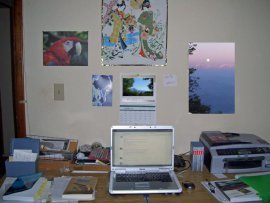 nally, I was gifted with a year of the internet, and after checking out libraries and finding other interesting sites such as the Internet Movie Database, I wondered how I could possibly use this unexpected gift. I figured that by the end of that first year, either I would find something to do, or I would get rid of it.
nally, I was gifted with a year of the internet, and after checking out libraries and finding other interesting sites such as the Internet Movie Database, I wondered how I could possibly use this unexpected gift. I figured that by the end of that first year, either I would find something to do, or I would get rid of it.
It didn’t even take a year, just a few months. Not only did I find something to do, I found a life, excitement, friends, even love of a sort. (I loved blogging from the first time I posted an article and understood what blogging was all about.) I also found support and encouragement. I don’t know how I would have dealt with the death of my life mate/soul mate if it weren’t for the bereft I met because of opening myself to the blogosphere.
Now, almost three and a half years after his death, I’m looking around my offline world, and I’m finding life, excitement, friends, even love of a sort. (I love walking with the local Sierra Club.) I no longer seem to need the screen of a computer to filter the worst of my worry or pain. I see the world through the excited eyes of child rather than the angst-ridden eyes of a bereft and lonely woman.
Parts of my offline life are hard, of course. I’m looking out for my 96-year-old father, dealing with problematic family members, and experiencing occasional upsurges of grief, but what isn’t hard is easy. Fun, even.
Instead of fearing the rest of my life alone, now I’m looking forward to seeing what I will make of myself.
***
Pat Bertram is the author of the suspense novels Light Bringer, More Deaths Than One, A Spark of Heavenly Fire, and Daughter Am I. Bertram is also the author of Grief: The Great Yearning, “an exquisite book, wrenching to read, and at the same time full of profound truths.” Connect with Pat on Google+. Like Pat on Facebook.
Tagged: elderly father, escape from the internet, life after grief, life offline, life online, living alone


October 21, 2013
It’s In the Cards
This is going to be a tough weekend for me, a convergence of people and events and influences from the past that I would just as soon not cope with. I wanted to run away but couldn’t find anywhere to run (except for a long solitary hike in the desert), and anyway, the situation has to be dealt with.
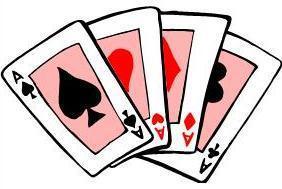 Normally, I don’t put much faith in prognostications, but since I’ve been nervous about how I will handle the situation, I asked my sister to do a Tarot reading for me. (Strange, until recently, I didn’t even know she knew how to do a reading.)
Normally, I don’t put much faith in prognostications, but since I’ve been nervous about how I will handle the situation, I asked my sister to do a Tarot reading for me. (Strange, until recently, I didn’t even know she knew how to do a reading.)
Apparently, the cards say that I’m going to be fine. They say I have the strength and courage to do this, it’s something that needs to happen, and I have the skills and abilities to handle it. I hadn’t expected to feel anything but a vague amusement at the ways of the cards, but instead I felt relieved by the assurance that I’ll be able to handle what is coming. (I knew it anyway. I just got nervous.)
One odd thing — apparently, this weekend I will see myself as working with others, yet others will see me as being on a solitary quest. Something to think about.
If you’re interested, this is the layout of the cards, which seems to accurately describe the situation, my hopes and fears for the outcome. If you find a different, more disturbing meaning, I don’t want to know!
Celtic cross spread:
Card 1: The card in this position represents you. (VII Chariot): In control, confident, connected to the power of the world. Able to triumph over obstacles, achieve victory by focusing intent and will. Self-assured, assuming reins of power.
Card 2: The card in this position is about what the conflict is. (XV The Devil): This card is about losing independence, becoming enslaved, having limited options, feeling desolate, but choosing to stay in the dark. Needing to break free.
Card 3: This card represents the foundation or basis of the situation. (Ace of Wands): Having grounded energy and enough self-assurance to rise to the occasion; accept this as an opportunity, a challenge. The spark has been lit!
Card 4: Influences of the past affecting the situation. (Seven of Wands): Being trapped, in conflict, defending others against harm, evil. Having the strength and fortitude to take a stand, defend what you believe in. Having the faith and courage to face difficulties.
Card 5: What is likely to happen in the immediate future. (King of Swords): Contemplation, solitude, patience, wise understanding, compassion. Understanding that all aspects and needs of people must be balanced.
Card 6: The outcome you most desire. (Queen of Wands): Calm assured confident. Can handle anyone and anything- this is not arrogance, but understanding your skills and abilities. Dedicated, engaging, wanting peace, harmony.
Card 7: Your self-image, how you see yourself in this situation. (3 pentacles): Working with others, compromise, cooperation.
Card 8: Influence of those around you/ how others see you in this situation. (8 Cups): On a solitary quest. Relinquishing the material world to seek answers from the depths, the underworld. Maybe upsetting the balance in order to achieve something greater- a more lasting connection or peace.
Card 9: What you hope or fear the most. (4 cups): Getting lost in yourself, not belonging, loneliness, boredom. Being too self-absorbed, introspective, seeking too deep into own concerns, lost in reverie.
Card 10: Outcome. What is most likely to come of it all if nothing much changes between now and then. (3cups): Coming together, creating something together, celebration, friendship, relying on others. Some sense of community, working things out together.
***
Pat Bertram is the author of the suspense novels Light Bringer, More Deaths Than One, A Spark of Heavenly Fire, and Daughter Am I. Bertram is also the author of Grief: The Great Yearning, “an exquisite book, wrenching to read, and at the same time full of profound truths.” Connect with Pat on Google+. Like Pat on Facebook.
Tagged: Celtic cross spread, it's in the cards, solitary quest, tarot reading


October 20, 2013
Identity Theft and Facebook
Identity theft is the fastest growing crime in America. In 2010, the total loss attributed to identity theft was $13.2 billion. In 2012, the loss was $21 billion.
According to the FFC, the number of identity theft incidents has reached 9.9 million a year, about 19 every minute. Even worse, studies show that it’s becoming more common for someone close to the victim to be the thief. In 32% of identity theft cases, a family member or relative was responsible for stealing the identity. Another 18% were victimized by friend, neighbor, or in-home employee. The average loss per incident is $4,930.
 The moral of the story is, be careful about giving out personal information. If someone calls you asking for such information, be very suspicious. If you make the call, such as to your bank, it’s probably okay (and necessary) to give out the information.
The moral of the story is, be careful about giving out personal information. If someone calls you asking for such information, be very suspicious. If you make the call, such as to your bank, it’s probably okay (and necessary) to give out the information.
Just as important is to be careful what you post on Facebook and other sites. So many security questions that institution and various sites ask, such things as mother’s maiden name, the name of your first pet, or the street you grew up on, are routinely mentioned on FB, and con artists can use such information to gain access to your life. (Only 28% of identity theft cases involve credit or financial fraud. Phone, utility, bank and employment fraud make up another 50% of the cases.)
And of course, you know that you’re supposed to use passwords and PIN numbers that are not easy to guess or are not recorded anywhere.
One thing no one mentions is “liking” pages on Facebook or even off Facebook. I’ve liked things and then never been able to unlike them, and forever after, those products or programs are linked to me. “Liking” has become entwined in the whole marketing milieu, letting your friends and fans (and potential victimizers) know more about you than you ever wanted them to know.
Of course, I have nothing of any monetary value, so I doubt anyone would ever care to steal, but still, I try to be careful.
Makes me wonder — what if someone had their identity stolen, and it turned out to be a good thing for them. Could be an interesting story.
***
Pat Bertram is the author of the suspense novels Light Bringer, More Deaths Than One, A Spark of Heavenly Fire, and Daughter Am I. Bertram is also the author of Grief: The Great Yearning, “an exquisite book, wrenching to read, and at the same time full of profound truths.” Connect with Pat on Google+. Like Pat on Facebook.
Tagged: facebook and identity theft, identity theft, protection from identity theft


October 19, 2013
By the Light of the Moon
Last night I went walking by the light of the moon. I was in a group, and we strode on a trail beside a riverbed, so we didn’t have to deal with traffic, which is just as well. Even with the full moon, we would have been invisible to drivers. (I couldn’t see the couple who walked in front of my car as I drove to the rendezvous until I was almost on them. Good thing they were aware of me, though it wasn’t bright of them to be so careless.)
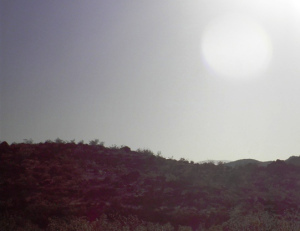 I don’t remember ever taking a moonlit walk before. When I was a young adult, before I got my car (the same one I have now, incidentally) I walked to work, and I often had to hike home alone in the dark. I suppose during many of those city nights there had been a visible moon, but streetlights brought the sky in close, so something as far away as the moon would not have been as impressive or as memorable as the moon last night.
I don’t remember ever taking a moonlit walk before. When I was a young adult, before I got my car (the same one I have now, incidentally) I walked to work, and I often had to hike home alone in the dark. I suppose during many of those city nights there had been a visible moon, but streetlights brought the sky in close, so something as far away as the moon would not have been as impressive or as memorable as the moon last night.
I do remember one particular night walk — it had to have been almost twenty-five years ago when my now deceased life mate/soul mate was still strong and healthy and up for adventure. We were living in a small town. Snow had fallen, and no one was about. No cars were on the road. All was still. Not even a hint of a breeze. We could hear the crunch of pristine snow beneath our feet, and the almost cathedral-like silence. It was bright — we weren’t walking in pitch black — but I don’t know if the light came from a moon or from ambient light reflected off the snow. We only walked a few blocks to a small town square. We stood there for a few minutes, enjoying the magical night, and then we headed back.
I don’t recall any other night walks. We spent the last couple of decades in ranching country, and an irrigation ditch ran in front of the house. Stagnant water. Mosquitoes. Need I say more? Well, maybe I do. I’m sensitive to mosquito venom — the bites always make me sick — so as much as possible I stayed inside when evening came. Besides, I didn’t much like the thought of meeting a coyote or a fox (or even an angry dog) on that empty country road.
So last night was a treat. A cool, clear, autumn evening with a hint of a breeze. A few stars. And a moon so bright in the huge empty sky, it cast our shadows on the pathway.
A walk worth remembering. A walk worth writing about.
***
Pat Bertram is the author of the suspense novels Light Bringer, More Deaths Than One, A Spark of Heavenly Fire, and Daughter Am I. Bertram is also the author of Grief: The Great Yearning, “an exquisite book, wrenching to read, and at the same time full of profound truths.” Connect with Pat on Google+. Like Pat on Facebook.
Tagged: memories to treasure, moonlit walk, walking by the light of the moon, walking in the snow


October 18, 2013
Stop Wasting Food!
A few days ago I wrote Haunted by an Image of Pizza, a post about the huge mounds of half-eaten pizza I saw in dumpster behind a restaurant. I’ve always believed that food was sacred, and that it was a sin to waste anything edible. I despise food fights in movies and scenes where people trash leftovers instead of carefully saving them. Too often, the characters take a few bites of food and scrape the rest in the trash can or garbage disposal, and this ruins the movie for me. It shows a pattern of disregard for food that viewers consciously or unconsciously pick up on.
 Besides, how can I empathize with a character who wastes food? I never waste food. I buy only what I can eat before the food goes bad, and when/if I cook, I always store what is left. Leftovers is a term I never use. I believe there is no such thing as leftover food, just a precooked meal. (And to way of thinking, if food smells and looks fresh, it’s still edible. Expiration dates seem more like an expiration of liability than the expiration of food. I’ve eaten eggs that are still fresh two weeks after the expiration date, and canned goods a year or even two after the date.)
Besides, how can I empathize with a character who wastes food? I never waste food. I buy only what I can eat before the food goes bad, and when/if I cook, I always store what is left. Leftovers is a term I never use. I believe there is no such thing as leftover food, just a precooked meal. (And to way of thinking, if food smells and looks fresh, it’s still edible. Expiration dates seem more like an expiration of liability than the expiration of food. I’ve eaten eggs that are still fresh two weeks after the expiration date, and canned goods a year or even two after the date.)
Someone left a comment on that post that I would like to share with you. I ended my blog with “I can’t do anything about the situation, either to help the homeless fellow or deal with the discarded food, but still, the image stays with me.” She responded:
Why do you feel like you can’t do anything about the situation? Who do you think can? I will link a couple of articles and a video that I think you (and everyone else) should read/watch. Note the quote “Everybody is waiting for somebody else to take action.”
http://www.thinkeatsave.org/index.php/stop-wasting-food
http://www.themindfulword.org/2011/designed-starvation-food-waste/
http://www.ted.com/talks/tristram_stuart_the_global_food_waste_scandal.html
I can’t emphasise enough that this IS everybody’s responsibility, especially those of us in the privileged position to live in countries with surplus food as opposed to none, and you CAN do something to help the situation.
People are starving all over the world, yet we are so greedy, we order/cook/buy more than we can eat, and throw away the rest. The world produces enough food to feed each person on the globe 2,700 calories per day. (Read more at http://www.themindfulword.org/2011/designed-starvation-food-waste/#yh1IrXaCweEPe6J8.99). No one needs to go hungry.
We’ve been taught that the aesthetics of food is important, and we can be taught that food with blemishes and such things as crooked carrots can be pleasing, too.
As Mahatma Ghandi said, “The world has enough for everyone’s need, but not enough for everyone’s greed.”
***
Pat Bertram is the author of the suspense novels Light Bringer, More Deaths Than One, A Spark of Heavenly Fire, and Daughter Am I. Bertram is also the author of Grief: The Great Yearning, “an exquisite book, wrenching to read, and at the same time full of profound truths.” Connect with Pat on Google+. Like Pat on Facebook.
Tagged: discarded food, dumpster diving, global hunger, Mahatma Ghandi, starvation, wasting food


October 17, 2013
How Mountains Shape My Stories
Because I’ve always lived in the shadow of mountains, mountains always shadow my writing. This is especially true in Light Bringer. The story begins when a baby is found on the doorstep of a remote cabin in the shadows of the Rocky Mountains, and continues years later when the foundling, now an adult, returns to the high country to find out who she is. The mountains in my novel are both protective and secretive — the hills protect those who live in their shadow, yet the mountains also harbor terrible and awesome secrets that threaten those same people.
Whenever I needed a hiding place for the secrets of the ages in Light Bringer, I searched maps for isolated mountain ranges, and ended up with a library beneath the Ahaggar Mountains in Algeria, ancient artifacts beneath the Beishanmai Mountains in the Gobi Desert, and experimental spacecraft beneath the McDonnell Ranges in Australia. I’d heard about the mountains in Australia where the experiments were being done, and in my research I’d come across hints of what lay beneath the Ahaggar Mountains, but the Gobi location was strictly a guess, though later I discovered that in fact, caves deep inside the Beishanmai Mountains were repositories for ancient treasures.
Maybe the mountains themselves were helping with the book.
Excerpt from Light Bringer (Incidentally, though not all the treasures mentioned might have been found beneath the Ahaggar mountains, they do exist):
Of all the extraordinary things Teodora had seen since starting work on her current assignment, the library, deep within the Ahaggar Mountains in Algeria, had been the most stunning. She did not know who had created the library or how it had come into IISA’s possession, but she had the privilege of being one of the few people to have seen the place.
The passageways, dug thousands of years ago, were painted with pictures of cities that had crumbled to dust before history was born. Those tunnels led to a series of vast modernized rooms—climate-controlled, dust-free, computerized.
One room contained row upon row of glass cases, which protected manuscripts and scrolls too fragile to handle. Another room contained an untold number of clay tablets, some written in languages that had yet to be identified. A third room contained crystals and optical discs that held digitalized information, and other discs that gave off holographic images when spun. Though seemingly futuristic, they were relics of an incredibly remote past.
The final room contained bound books, most of which were less than two thousand years old. Tens of thousands of these books were alchemical texts that detailed such things as perpetual lamps, the manipulation of matter to produce force fields, and simple ways of creating sustainable energy. A few also talked about how certain churches in France were linked together to create a message, which pre-dated Christianity. These churches were built on ancient power points that had been mapped by astronomers and geomancers who wanted to warn future generations of the heavenly body that would come to destroy earth.
***
Pat Bertram is the author of the suspense novels Light Bringer, More Deaths Than One, A Spark of Heavenly Fire, and Daughter Am I. Bertram is also the author of Grief: The Great Yearning, “an exquisite book, wrenching to read, and at the same time full of profound truths.” Connect with Pat on Google+. Like Pat on Facebook.
Tagged: Ahaggar Mountains, ancient artifacts, ancient libraries, Beishanmai Mountains, Light Bringer, mountains


October 16, 2013
I’m a Guest on the Second Wind Publishing Blog!
I am blogging at my publisher’s blog today, talking about Crashing the (Science Fiction) Party,
Once a long time ago, I crashed a Halloween party. Sounds very bold, doesn’t it? But truly, it was out of character for me, and besides, I was in costume so in a way the person who crashed the party wasn’t really me. I remember that the party was given by a friend of a friend, but I have no idea how or why I decided to go — perhaps as a joke to see how long it would take for people to realize they didn’t know me. Continue reading—>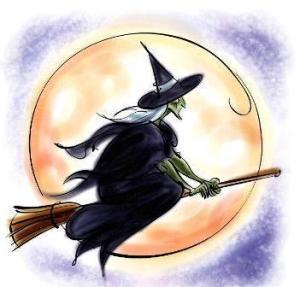
My previous guest post for Second Wind Publishing was Finding the Truth of a Story,
We are steeped in story. From birth to death, story forms our lives. Today, more stories are available to us in more media than ever before in history, including the stories we share with each other and ourselves. What is a daydream if not a story of the future we tell ourselves? And at night, while sleeping, our dreams tell us other stories. No wonder we have such a hard time finding a story that is not clichéd. Continue reading—>
My most popular post on the Second Wind Blog is: What is Your Character’s Favorite Color?
Because colors have meaning, a character’s favorite color can tell us a lot about him or her. Red for an ambitious extrovert. Pink for an affectionate, compassionate person. Yellow for an optimistic artist. Green for a benevolent humanist. Blue for a cool, confident conservative. Purple for an intuitive, spiritually oriented person. Brown for a down-to-earth type. Continue reading—>
***
Pat Bertram is the author of the suspense novels Light Bringer, More Deaths Than One, A Spark of Heavenly Fire, and Daughter Am I. Bertram is also the author of Grief: The Great Yearning, “an exquisite book, wrenching to read, and at the same time full of profound truths.” Connect with Pat on Google+. Like Pat on Facebook.
Tagged: crashing a pary, finding the truth of a story, guest blogger, Second Wind Publishing


October 15, 2013
Writing: Passion or Puzzle?
Most how-to books on writing suggest getting the first draft down as quickly as possible so that the passion shines through. This is good advice, and I would follow it if stories came easy to me, but they never do. I worried about this (for five minutes or so), wondering if my novels would feel dry and unemotional because I approach them as a puzzle, but the only difference between my way of writing and the so-called right way is that I do my thinking as I write rather than as I 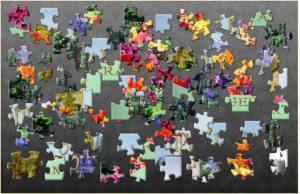 rewrite.
rewrite.
Is one way better than another? I don’t know, but if we accomplish what we set out to do, both the logical writers and the passionate ones can end up with interesting stories that will evoke emotions in our readers. In my case, during rewrites I get rid of much of the dryness that comes from the puzzle approach. In your case, perhaps, you lose some of that freewheeling passion when you organize what you have written into a more cohesive story.
We all have to find the best way to write. I am not condoning poor grammar, typographical errors, bad plotting, ignorance of story elements, or any of those other rules that new writers rail against. I’m talking about the fun of writing, the passion, the puzzle.
Samuel Johnson remarked, “No man but a blockhead ever wrote, except for money.” I guess that makes most of us blockheads, because we write knowing that except for a select group, there is little money to be made from writing. We need other reasons for spending so much time bleeding words.
For me, it’s the puzzle. As frustrating as it gets, I love figuring out plots, character’s motives, new ways of presenting common thoughts. Beats crossword puzzles any day.
***
Pat Bertram is the author of the suspense novels Light Bringer, More Deaths Than One, A Spark of Heavenly Fire, and Daughter Am I. Bertram is also the author of Grief: The Great Yearning, “an exquisite book, wrenching to read, and at the same time full of profound truths.” Connect with Pat on Google+. Like Pat on Facebook.
Tagged: best way to write, do writers need passion, writing as passion, writing as puzzle






